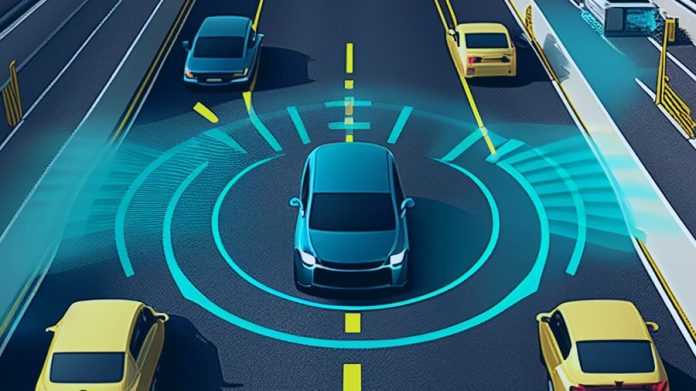From simple driver aid technologies to extremely clever, semi-autonomous cars, the automobile industry is changing quickly. The transition from conventional ADAS to Level 2+ and Level 3 autonomous driving, made possible by developments in artificial intelligence, sensor fusion, edge computing, and functional safety, is at the core of this evolution. The fundamental engineering advancements that not only enable Level 3 autonomy but also make it feasible for mass production are examined in this article.
Level 3 systems still anticipate the driver to take control when the system requests it, in contrast to Level 4 systems, which may function without a steering wheel or pedals and don’t require driver participation inside their designated operational domains. The technological advancement from Level 2 and the constraints that set Level 3 apart as a stage of transition toward complete autonomy are both highlighted in this comparison.
Introduction to Level 3 Autonomy
Level 3 autonomy, or “Conditional Automation” as defined by SAE J3016, allows the driver to relinquish active control under certain circumstances, allowing the vehicle to take over dynamic driving responsibilities. Suppose the Operational Design Domain (ODD) is satisfied. In that case, Level 3 systems can control lane changes, acceleration, braking, and environmental perception without human interaction, in contrast to Level 2, which necessitates continuous driver supervision.
With the help of UNECE standards, nations such as China, Japan, and Germany have begun to approve Level 3 deployments (R157). This change necessitates a strong technical base that combines real-time decision-making algorithms, ultra-low latency processing, and sensor redundancy.
The Level 3 Vehicle Architecture
Platforms for Centralized Computing
Centralized computation systems that can process more than 20 sensor inputs in real-time are replacing legacy distributed ECUs. Level 3 vehicles are increasingly being driven by high-performance SoCs like of the Qualcomm Snapdragon Ride Flex, NVIDIA DRIVE Thor, and Mobileye EyeQ Ultra. These SoCs are based on real-time safety islands, ISPs (Image Signal Processors), and AI accelerators. Controlling power consumption and heat dissipation becomes a crucial engineering challenge as these compute platforms incorporate numerous high-throughput pipelines and AI inference engines. Advanced thermal management techniques, such as power gating, dynamic voltage/frequency scaling (DVFS), heat sinks, and active cooling, must be used by designers to guarantee system dependability, efficiency, and adherence to automotive-grade operating temperature ranges.
Combining LiDAR, Radar, and Camera Sensors
Level 3 cars use a redundant set of sensors:
- cameras for semantic segmentation and object classification.
- Radar for tracking velocity and depth in all weather conditions.
- LiDAR for object contour identification and high-resolution 3D mapping.
Using deep neural networks (DNNs), Bayesian networks, and Kalman filters, sensor fusion techniques combine multi-modal data to provide a logical environmental model. Avoiding obstacles and maintaining situational awareness depend on this. However, problems including cross-sensor synchronization under dynamic settings, sensor calibration drift over time, and different environmental influences on sensor dependability are introduced by real-world deployment. For the sensor suite to operate consistently, engineers must guarantee accurate temporal alignment and strong error correction.
Safety & Redundant Actuation
Designs that adhere to ISO 26262 guarantee fail-operational capabilities. Redundant power, steering, and braking systems are essential, particularly in situations where human override is delayed. At this level, ASIL-D certified systems and functional safety monitoring are non-negotiable.
Perception and Planning Driven by AI
The Level 3 AI stack consists of:
- Perception: To identify lanes, people, cars, and signs, DNNs were trained on millions of edge cases.
- Prediction: Probabilistic models and recurrent neural networks (RNNs) assess paths and intent.
- Planning: To create safe, driveable routes, path planning modules employ optimization solvers, RRT (Rapidly-exploring Random Trees), and A* search.
Real-time OS kernels and hypervisors are now a feature of compute platforms to control the separation of safety-critical and non-critical workloads.
Localization and High-Definition (HD) Maps
Level 3 systems use SLAM (Simultaneous Localization and Mapping) and GNSS corrections to integrate sensor data with HD maps that are centimeter-accurate. Real-time map streaming is available from map providers such as HERE, TomTom, and Baidu. Using fleet learning algorithms, some OEMs are experimenting with crowdsourced localization.
Real-Time Inference & Edge AI
For Level 3, inference latency is a bottleneck. On-chip AI accelerators (such as NPU and DSP cores) enable real-time neural network inference at over 30 frames per second with latency at the millisecond level. AI models can be deployed on embedded automotive platforms more efficiently thanks to widely used frameworks like ONNX Runtime and NVIDIA TensorRT. These toolkits aid in the optimization, quantization, and compression of models for effective real-time operation.
Mixed precision (INT8, FP16) is supported by new SoCs to balance energy efficiency and performance. Automotive-grade Linux or QNX-based systems and zero-downtime OTA updates are essential for maintaining the system’s security, responsiveness, and compliance. For Level 3, latency is a bottleneck. On-chip AI accelerators (such as NPU and DSP cores) enable real-time neural network inference at over 30 frames per second with latency at the millisecond level. Mixed precision (INT8, FP16) is supported by new SoCs to balance energy efficiency and performance.
Automotive-grade Linux or QNX-based systems and zero-downtime OTA updates are essential for maintaining the system’s security, responsiveness, and compliance.
Challenges Ahead
A single essential point that concerns the implementation strategy for Level 3 vehicles is the absence of standardised regulations across all regions. Unlike the European Union or Japan, and China, which have put in place systems for endorsing and managing Level 3 systems (i.e., UNECE R157), the United States still does not have overarching federal guidelines. Approvals are still left to states, which creates inconsistency at the central level. These inconsistencies impact OEM planning calendars, compliance validation testing, and strategies for market entrance.
- ODD Constraints: Most Level 3 systems have geo-fencing or speed limitations.
- Cost & Power: Sensor suites and compute platforms escalate the BOM, budget and thermal envelope.
- Cybersecurity: Robust security measures are needed for real-time V2X communication.
- Driver Handover: UX and regulation remain significant challenges for smooth transition from AI driver to human control.
Summation
In Level 3 autonomy, a milestone in automotive engineering progress is AI, mechatronics, embedded systems, and regulatory science working together. Level 4/5 complete autonomy may still be years away, but Level 3 demonstrates and paves the way for a future where cars not only provide assistance but drive themselves under supervision and sophisticated control.








